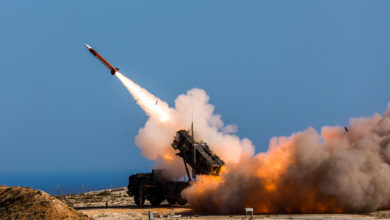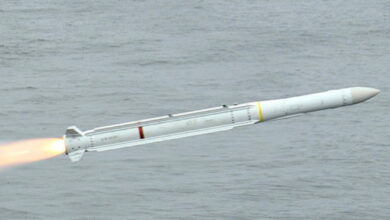Qatar purchase of Raytheon NASAMS air defense system moves forward
$215 million sale including 40 AIM 120C-7 AMRAAMs, software and services approved by US State Department
The U.S. State Department approved the estimated $215 million sale to Qatar of defense articles and services in support of the purchase of an air defense missile system, the Defense Security Cooperation Agency said in a release.
“The Government of Qatar has requested to buy defense articles and services from the U.S. Government in support of a Direct Commercial Sale of the National Advanced Surface to Air Missile System (NASAMS),” the Tuesday, November 27 release said.
The proposed sale includes 40 AIM 120C-7 Advanced Medium-Range Air-to-Air Missiles (AMRAAM) missiles, eight AMRAAM Captive Air Training Missile (CATM-120C), one spare AMRAAM guidance section, one spare control section and missile containers.
It also includes classified software for the Raytheon-made AN/MPQ-64F1 Sentinel Short Range Air Defense (SHORAD) radar, spare and repair parts, cryptographic and communication security devices, precision navigation equipment, training, and other related program support.
The principal contractor and integrator will be Raytheon, which partnered with Norway’s Kongsberg to develop the medium-range networked and distributed NASAMS for the Royal Norwegian Air Force.
The proposed sale would help improve “Qatar’s defense capability to deter regional threats and strengthen its homeland defense,” bostering the security of a key U.S. partner “which has been, and continues to be, a significant host and member of coalition forces in the Middle East,” DSCA said.
“The NASAMS capability would provide a full range of protection from imminent hostile cruise missile, unmanned aerial vehicle, rotary wing, and fixed wing threats.”
Qatar’s lucrative contract
Little has been made public about Qatar’s purchase of NASAMS.
Norwegian news site E24 reported in August that Raytheon had signed a letter of intent with Qatar for the delivery of an air defense system to Qatar, a deal worth around $2 billion.
According to E24, Kongsberg CEO Geir Håøy said during the presentation of second quarter financial results that as Raytheon’s exclusive partner for NASAMS, a project would deliver Kongsberg around 30-40 percent of the contract value.
Turkey’s state-run Anadolu news agency reported in April that Qatar’s Defense Ministry said it had signed an agreement with Raytheon for an air defense system, valuing the contract at around $2.5 billion.
Raytheon says nine countries – Norway, the U.S., Finland, Spain, the Netherlands, Oman, Lithuania, Indonesia and “one undisclosed country” – have chosen NASAMS.
Earlier this year, India’s Ministry of Defence reportedly approved the acquisition of the NASAMS II system to boost air defenses in New Delhi.
NASAMS air defense system
 NASAMS reached initial operational capability in Norway by 1995 and was fully operationally capable by 1998. The updated NASAMS II was operational in 2007.
NASAMS reached initial operational capability in Norway by 1995 and was fully operationally capable by 1998. The updated NASAMS II was operational in 2007.
It employs the AIM-120 Advanced Medium Range Air-to-Air Missile (AMRAAM) as the primary weapon. It can also fire the RIM-162 Evolved Sea Sparrow Missile, AIM-9X Sidewinder and can be modified to use other weapons including indigenous missiles.
A NASAMS II battery consists of up to 12 missile launchers carrying six missiles each, networked with up to eight AN/MPQ-64 Sentinel high-resolution X-band 3D radars, MSP 500 electro-optical/infrared (EO/IR) sensor systems and Fire Distribution Centres.
Targets including cruise missiles, drones, helicopters and planes are automatically detected and tracked by the pencil beam radar, while the FDC automatically conducts identification, threat evaluation and weapon assignment.
NASAMS can also fire using target data provided by external sensors.












